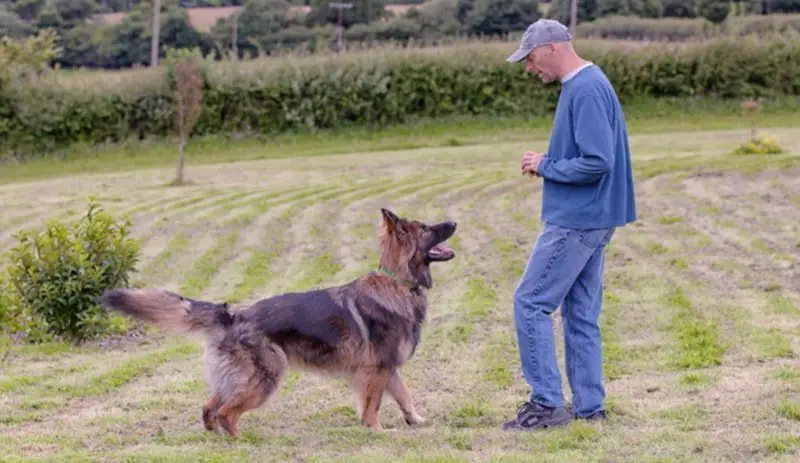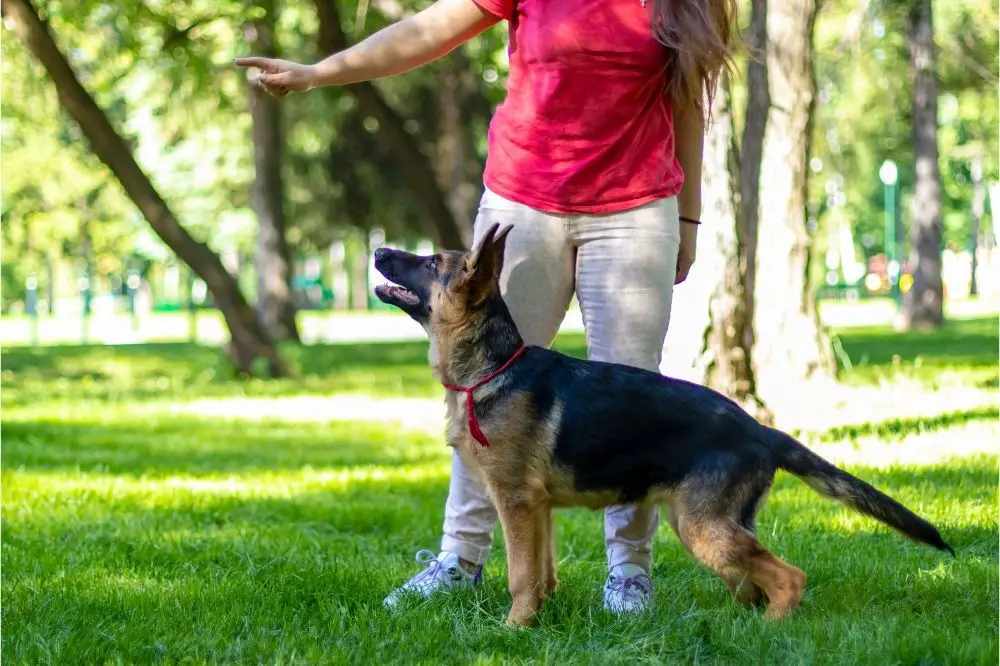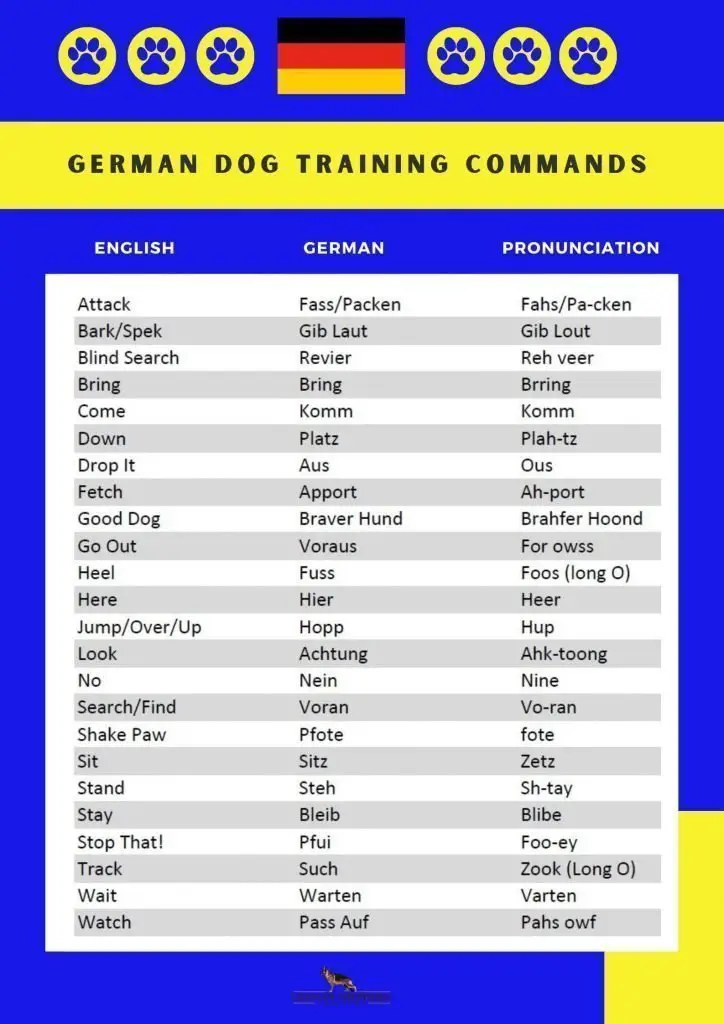Dog Training Commands in German
Choosing to train with German dog commands can be a powerful training tool and has its advantages.
Basic obedience training aims to instill basic manners, compliance, and desired behavior. Basic training equals basic commands.
Police k9s, sport dogs, and working dogs have advanced training and understand more command words which expand their vocabulary.
Many professional dog trainers use German dog commands, as do police dogs, people competing for Schutzhund titles, or other sport or working titles.
Don’t worry. You don’t have to be a pro trainer, have a working dog, or participate in a popular dog sport to use German commands.
4 Benefits of Training A Dog in German
There are various reasons why people in the United States train their dogs in different languages. Training your dog in a foreign language will help distinguish similar words and commands.
1. German dog training commands are more distinct than English commands which helps prevent dogs from becoming confused.
2. German commands are effective because they are short, sharp, unmistakable, and not used in everyday conversation like English commands. For example, the down position command sounds similar to gown. Down in German is Platz.
3. An advantage of teaching your dog German words is your dog will only listen to your commands – unless your acquaintances are fluent in German.
4. Another reason to use German training commands is that it’s fun and sets you apart in a regular group obedience class or dog park.
How to Train A Dog in German
1. Decide which German commands you want to use. Basic obedience commands like sit, stay, and down are a popular choice to start.
2. If your native language is English, learn how to pronounce the German command.
3. Start simple by focusing on one command at a time. This avoids confusion and sets your dog or pup up for success.
4. Confidently say the command in a clear and crisp tone. If you are training a dog who understands the English command, give the German command followed by the English command to help with the association. Over time you will be able to drop the English command.
5. Be repetitive when teaching something new. Let’s use the sit command as an example. Use food over your dog’s nose to guide a puppy into a sitting position. As your pup starts to sit, give the command “Sitz, Sitz, Sitz.” When your pup is sitting, reinforce the command and behavior by saying, “good, Sitz.”
6. Use positive reinforcement for a job well done. Verbal praise and food rewards will keep your dog’s attention and motivate them to please you.
7. Keep training sessions short and fun.
Teaching German Commands to A Puppy Versus an Older Dog
The training process will be quicker with a pup versus retraining an older dog. A puppy is a clean slate with zero word association to commands.
However, any dog of any age can learn a new language. The most important thing to remember is patience and consistency when introducing new words and commands.
Intelligent breeds like German Shepherd Dogs thrive on mental stimulation and learning new things. Dog owners with smart breeds will find their dogs and pups responding to a new language in no time.
The Benefits of Training A Dog in German and English
We discussed the benefits of training a dog in German. However, it’s a good idea to consider the benefits of having a bi-lingual dog.
In the case of an emergency and someone else had to care for your dog, communication could be frustrating for the caretaker and your dog.
The same theory applies at the groomers, at a boarding facility, or with an in-home pet sitter.
If you have a protection dog, law enforcement K9, or a sport dog, a third party doesn’t need to give commands like attack, track, or search. Keep advanced commands in German but train your dog in German and English for useful basic dog commands like sit, stay, and down.
German Dog Commands
German Shepherd in German is Deutscher Schäferhund
The above list is popular German commands used by trainers and sports enthusiasts. Pick out commands you like and fit your training needs.
To be sure you are pronouncing the commands correctly, use Google translate. Type in the German word and click on the speaker icon below it. Listen to the pronunciation several times and practice saying it.
Pick out a few commands to get started, and soon you’ll be able to brag to your friends and family that your dog obeys commands in – German Er Gehorcht Auf Kommando.

























